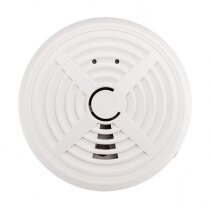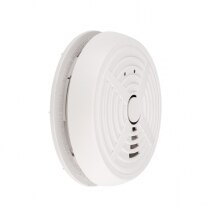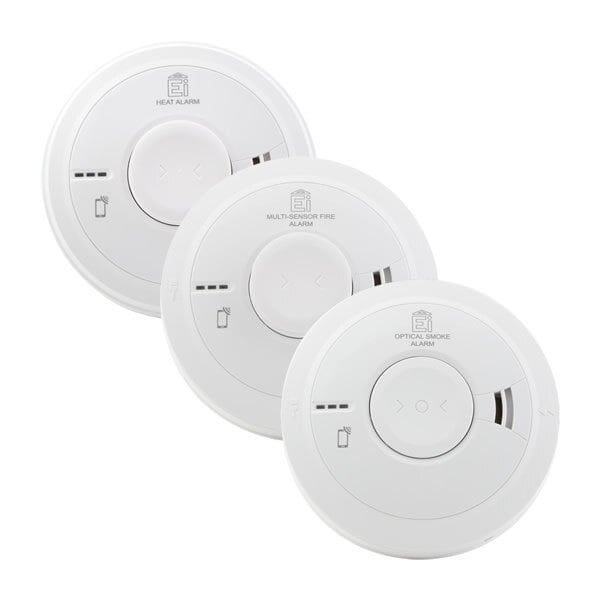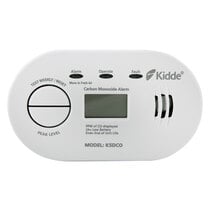-
Contact
Sales & Customer Service
0800 612 6537 support@safelincs.co.uk Live ChatDelivery Enquiries
0800 077 6149 - Resources
Fire & Safety Solutions
CALL OUR TEAM NOW 0800 612 6537
Lines open today 8:30am - 5pm
Quick Delivery
From £3.19 inc VAT
Live Chat - Online
Instant help & Advice
Trade Discounts
and exclusive pricing
0% Credit Available
Open an account now
5 Star Customer Feedback
Mains Powered Optical Smoke Alarm with Lithium Back-up Battery - BRK 660MRL
Discontinued Product
The manufacturer has withdrawn from the European market and is no longer supplying compatible alternatives. Since it is not possible to interlink alarms from different manufacturers, the recommended replacement for the whole discontinued BRK 600MRL range is the Aico Ei3000 series.
alternative product
Mains Powered Smoke Alarms with Lithium Back-up Ei3000 Series
- Available in Optical, Heat, Combined Optical & Heat, and Combined Heat & CO
- Mains powered alarms with sealed lithium back-up battery
- AudioLINK technology fitted as standard
- Interlinks with up to 12 compatible devices
- Compatible with Ei3000MRF SmartLINK Module for radio-interlinking
- Suitable for BS 5839-6: 2019 Grade D1 installations
- Also suitable for both the Welsh and Scottish 2022 legislation
£53.99 inc VAT
£44.99 ex VAT
Product Overview
Technical Data
FAQs (2)
The BRK 660MRL is a mains powered optical smoke alarm, fitted with a sealed, rechargeable lithium back-up battery capable of providing power to the alarm in the event of a mains power failure. Fitted with a combined test and alarm pause button and thermally enhanced optical technology, this alarm can be hardwire interlinked with up to 12 compatible alarms to provide a simultaneous warning.
- 230V mains powered optical smoke alarm
- 10 year sealed lithium back-up battery
- Supplied with a 5 year manufacturer's warranty
- Please note that BRK and First Alert are no longer manufacturing new stock for the European Market and while the products may have a 2018/19 manufacturing date they still provide a full 10 year lifespan and full warranty cover from date of purchase
- Combined test and alarm pause button
- Hardwire interlink with up to 12 compatible smoke and heat alarms
- CE and Kitemarked to BS EN 14604: 2005
- Suitable for installations needing to comply with BS 5839-6: 2019 Grade D1
- Provides a loud 85dB warning alarm when activated
- An interlinked system provide the earliest possible warning of fire
- Product warranty and life commences from date of purchase
| Product Code | BK660MRL |
|---|---|
| Alternative Product Codes | 660MRL |
| Brand | BRK |
| Back-Up Battery | 10 year sealed lithium |
| Dimensions (HxDia) | 44x140mm |
| Operating Temperature | +5°C to +38°C |
| Relative Humidity | 10% to 85% Relative Humidity |
| Sound Output | 85dB |
| Weight | 0.22kg |
| Product Datasheets |
Q. Can a smoke alarm be fitted with a sticky adhesive pad in a let property?
A.
The sticky pad is suitable for all battery operated smoke alarms. However, we cannot judge if battery alarms are suitable for your let property, as let properties usually require mains powered alarms. There is some advice to this in the governments guides to fire risk assessments. http://www.safelincs.co.uk/Fire-Risk-Assessment/ Also see the LACoRS guide for let properties.
Q. What sort of smoke alarm system would I need to install for a HMO?
A.
BS 5839-6 recommends that one or two storey HMOs with an individual floor area of no more than 200sqm (not the total of both floors) should have a Grade D smoke alarm system installed. Grade D refers to mains powered smoke alarms with a back up battery power supply. The alarms can be interlinked either by wire or by radio signal and the system does not require a separate fire alarm panel. For HMOs of 3 storey or higher, a Grade A panel system would need to be installed. This can cover the whole of the building, or can be used just for the communal areas with a separate Grade D system installed for the individual dwellings. For both applications, the level of cover should be a minimum of LD3 (in all escape routes) but this may change according to the fire risk assessment.
Looking for more information?
If you have any questions or would like more information about this product you can ask one of our specialists.
Live Chat Available Now
Direct Telephone
01507 464181



























